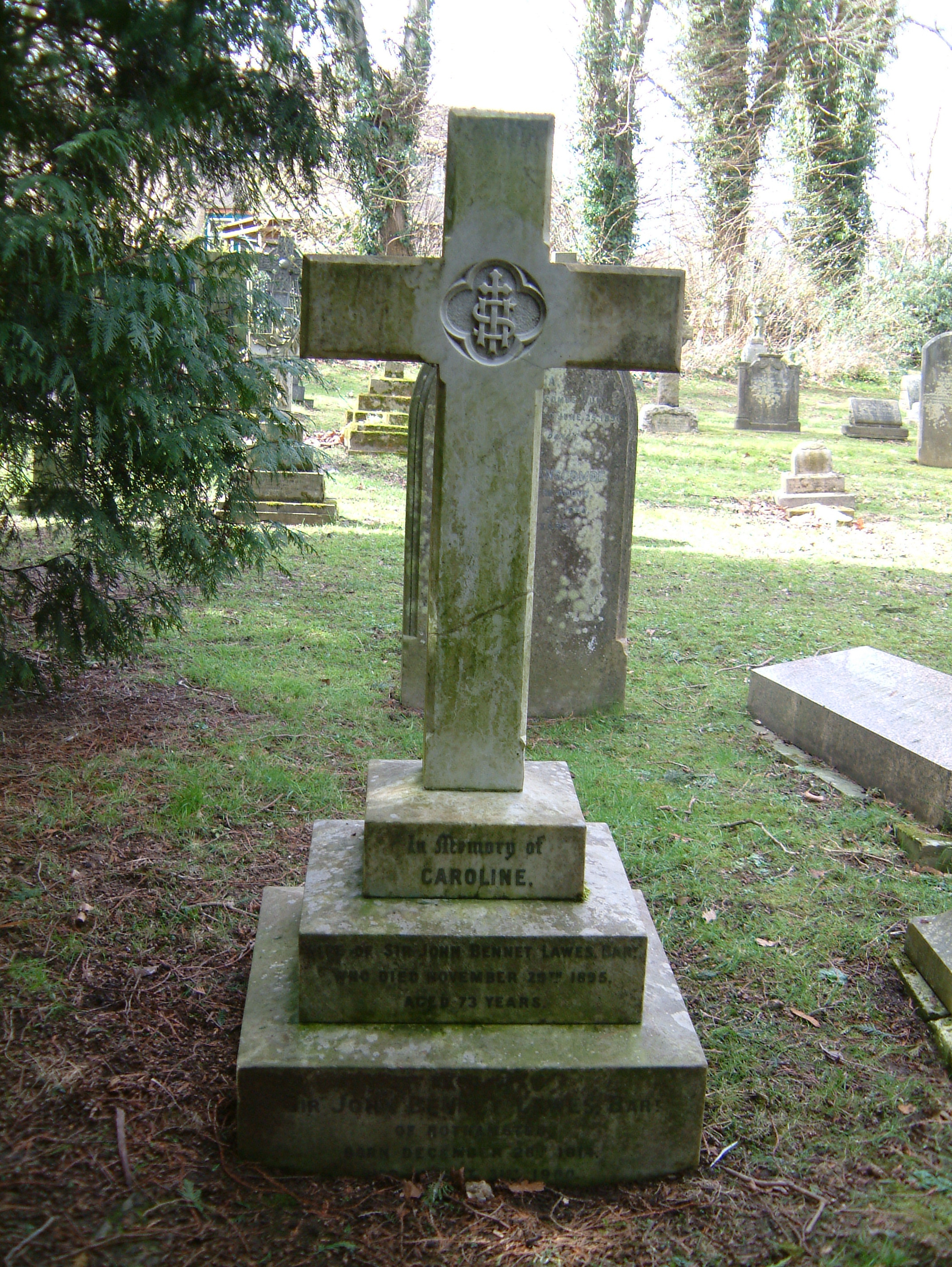|
Lawes Baronets
The Lawes Baronetcy, of Rothamsted in the County of Hertford, is a title in the Baronetage of the United Kingdom. It was created on 19 May 1882 for the entrepreneur and agricultural scientist John Bennet Lawes Sir John Bennet Lawes, 1st Baronet, FRS (28 December 1814 – 31 August 1900) was an English entrepreneur and agricultural scientist. He founded an experimental farm at his home at Rothamsted Manor that eventually became Rothamsted Research, .... Lawes baronets, of Rothamsted (1882) * Sir John Bennet Lawes, 1st Baronet (1814–1899) * Sir Charles Lawes-Wittewronge, 2nd Baronet (1843–1911) *Sir John Bennet Lawes-Wittewronge, 3rd Baronet (1872–1931) *Sir John Claud Bennet Lawes, 4th Baronet (1898–1979) *Sir (John) Michael Bennet Lawes, 5th Baronet (1932–2009) On the death of the 5th baronet, the baronetcy became extinct. Notes References *Kidd, Charles, Williamson, David (editors). ''Debrett's Peerage and Baronetage'' (1990 edition). New York: St Martin's ... [...More Info...] [...Related Items...] OR: [Wikipedia] [Google] [Baidu] |
Baronetage Of The United Kingdom
Baronets are a rank in the British aristocracy. The current Baronetage of the United Kingdom has replaced the earlier but existing Baronetages of England, Nova Scotia, Ireland, and Great Britain. Baronetage of England (1611–1705) James I of England, King James I created the hereditary Order of Baronets in England on 22 May 1611, for the settlement of Ireland. He offered the dignity to 200 gentlemen of good birth, with a clear estate of Pound sterling, £1,000 a year, on condition that each one should pay a sum equivalent to three years' pay to 30 soldiers at 8d per day per man (total – £1,095) into the King's Exchequer. The Baronetage of England comprises all baronetcies created in the Kingdom of England before the Act of Union 1707, Act of Union in 1707. In that year, the Baronetage of England and the #Baronetage of Nova Scotia (1625–1706), Baronetage of Nova Scotia were replaced by the #Baronetage of Great Britain, Baronetage of Great Britain. The extant baronetcies ar ... [...More Info...] [...Related Items...] OR: [Wikipedia] [Google] [Baidu] |
John Bennet Lawes
Sir John Bennet Lawes, 1st Baronet, FRS (28 December 1814 – 31 August 1900) was an English entrepreneur and agricultural scientist. He founded an experimental farm at his home at Rothamsted Manor that eventually became Rothamsted Research, where he developed a superphosphate that would mark the beginnings of the chemical fertilizer industry. Life John Bennet Lawes was born at Rothamsted, Harpenden, Hertfordshire, on 28 December 1814, the only son of John Bennet Lawes, owner of the Rothamsted estate and lord of the manor of Rothamsted. His father died when he was eight years old, so he was brought up mostly by his mother Marianne. He was educated at Eton College and Brasenose College, Oxford, although he didn't graduate. In 1822 , his father died and Lawes inherited Rothamsted. Before leaving Oxford in 1832, Lawes had begun to interest himself in growing various medicinal plants on the Estates and started to experiment on the effects of various manures on plants growing in ... [...More Info...] [...Related Items...] OR: [Wikipedia] [Google] [Baidu] |
Sir John Bennet Lawes, 1st Baronet
Sir John Bennet Lawes, 1st Baronet, FRS (28 December 1814 – 31 August 1900) was an English entrepreneur and agricultural scientist. He founded an experimental farm at his home at Rothamsted Manor that eventually became Rothamsted Research, where he developed a superphosphate that would mark the beginnings of the chemical fertilizer industry. Life John Bennet Lawes was born at Rothamsted, Harpenden, Hertfordshire, on 28 December 1814, the only son of John Bennet Lawes, owner of the Rothamsted estate and lord of the manor of Rothamsted. His father died when he was eight years old, so he was brought up mostly by his mother Marianne. He was educated at Eton College and Brasenose College, Oxford, although he didn't graduate. In 1822 , his father died and Lawes inherited Rothamsted. Before leaving Oxford in 1832, Lawes had begun to interest himself in growing various medicinal plants on the Estates and started to experiment on the effects of various manures on plants growing ... [...More Info...] [...Related Items...] OR: [Wikipedia] [Google] [Baidu] |
Charles Bennett Lawes
Sir Charles Bennet Lawes-Wittewronge, 2nd Baronet (3 October 1843 – 6 October 1911) was an English rower, athlete and sculptor. He exhibited twelve works at the Royal Academy. Life Charles Bennet Lawes was born at Teignmouth, Devon, the only son of Sir John Lawes of Rothamsted Manor, Hertfordhire. He was educated at Eton and Trinity College, Cambridge. At Cambridge he won the Colquhoun Sculls in 1862 and won the Diamond Challenge Sculls at Henley Royal Regatta in 1863. He excelled in the university distance running events and received an athletics Blue in 1864 for the mile at the Inter University sports, which he won again in 1865. He was a rowing Blue in 1865 when he stroked the losing Cambridge crew in the Boat Race but was in the winning crew of the Ladies' Challenge Plate at Henley. He was beaten by Edward Michell in the Diamond Challenge Sculls in 1865, but won the Wingfield Sculls beating Walter Bradford Woodgate. In 1865 he was the Amateur Athletics Club champion ... [...More Info...] [...Related Items...] OR: [Wikipedia] [Google] [Baidu] |


